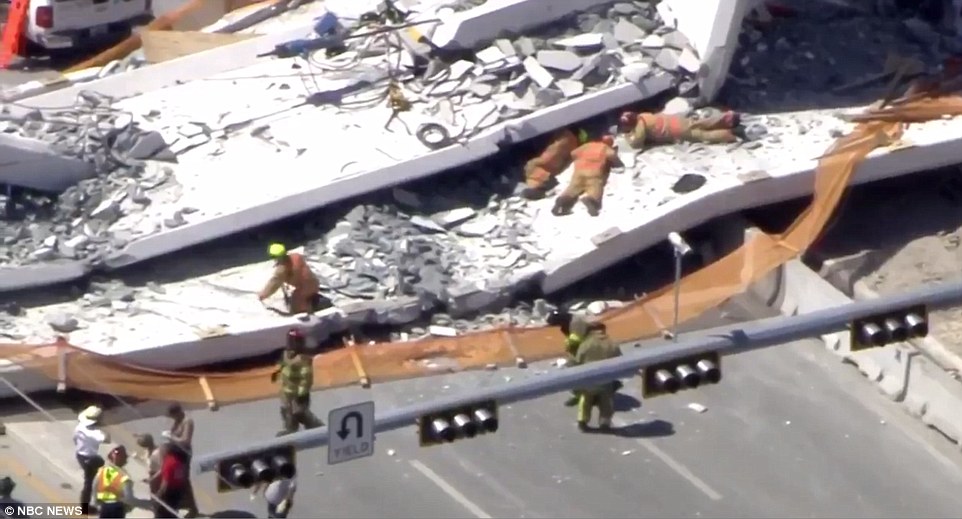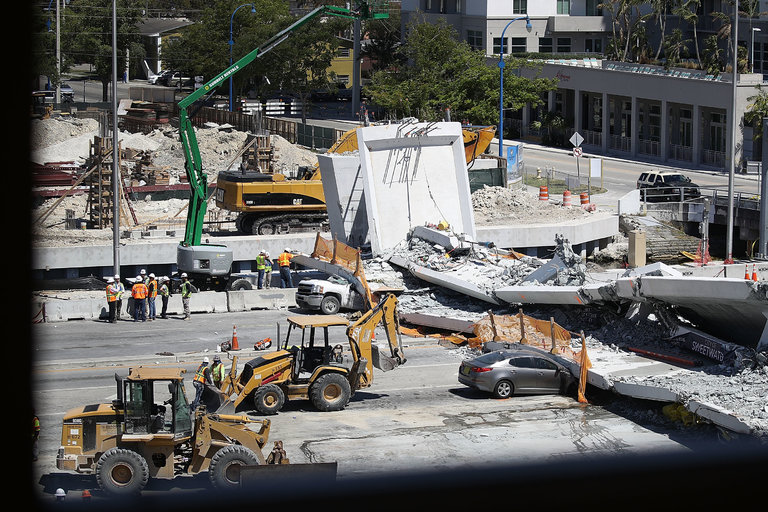Toroid
Founding Member
A newly constructed pedestrian bridge at Florida International University collapsed. The article states there were several fatalities.
Several dead in bridge collapse at Florida International University
www.youtube.com/watch?v=IPthP3MXcs8
Several dead in bridge collapse at Florida International University
Live Feed: www.youtube.com/watch?v=ISOEBbwirRgSWEETWATER, Fla. -- A newly installed pedestrian bridge that connects Florida International University (FIU) with the city of Sweetwater west of Miami has collapsed. Florida Highway Patrol Lt. Alejandro Camacho tells CBS News there are "several fatalities" resulting from the collapse, which crushed at least five cars. He said the bridge was still under construction and not open to pedestrians.
At least three patients were transported to the hospital, according to Miami-Dade Fire Rescue.
Aerial footage from CBS Miami shows vehicles stuck underneath the 950-ton bridge. First responders were seen placing one victim in an ambulance.
"Me and my boyfriend had just driven under the bridge," witness Isabella Carrasco told CBSN. "We actually commented on how new it was ... We had heard a loud bang. At first, we thought we had hit something, and when we looked around, we realized the bridge had collapsed on multiple cars. I didn't see any pedestrians walking on the bridge. When we looked around we saw that it was much, much worse."
"So many people go through this particular intersection every day, so it's very terrifying," Carrasco added.
www.youtube.com/watch?v=IPthP3MXcs8




